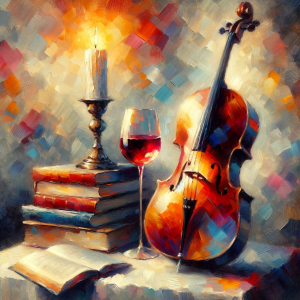The Role of Piano Chord Progressions in Jazz Improvisation


The Role of Piano Chord Progressions in Jazz Improvisation
Jazz, a genre that epitomizes creativity and expression, has long captivated audiences with its dynamic improvisation and rich harmonies. Central to this genre is the piano, an instrument that brings life to the unique soundscapes of jazz through its chord progressions. In this exploration, we delve into the significance of piano chord progressions in jazz improvisation, revealing how they form the backbone of this ever-evolving musical style.
The Heartbeat of Jazz: Piano Chord Progressions
At the core of jazz music lies the art of improvisation – a creative process where musicians spontaneously compose new melodies and harmonies. The piano is pivotal, serving as a harmonic and rhythmic foundation. Piano chord progressions, sequences of chords played in a particular order, are essential tools for jazz pianists. They provide a framework for improvisation, offering a structure that guides the flow of creativity.
Understanding Chord Progressions
Chord progressions in jazz are more than just a series of chords; they are the roadmap that guides the journey of a jazz piece. These progressions create the harmonic context in which a soloist improvises, setting the mood and tone of the improvisation.
A jazz pianist must be adept at understanding and playing these progressions and using them as a springboard for improvisation. This requires a deep knowledge of music theory and a keen ear for harmony. Each passage carries a distinct emotional and tonal quality, offering a palette of sonic colors that the pianist can draw upon. The ability to interpret and embellish these progressions in real-time sets apart great jazz pianists.
They must navigate complex chord changes seamlessly, often altering or substituting chords to create a more intriguing harmonic landscape. This high level of proficiency enables them to communicate and connect with the audience, transforming standard chord progressions into captivating musical narratives.
Improvisation and Expression
Improvisation is the soul of jazz, and piano chord progressions are the canvas upon which jazz musicians paint their musical expressions. A jazz pianist uses these progressions to weave intricate solos, each note and chord contributing to the piece’s narrative. This improvisation isn’t random; it’s a thoughtful process of choosing notes and rhythms that complement and enhance the underlying chord progression. The beauty of jazz lies in this balance between structure and freedom, where the chord progressions provide a familiar base. Still, the improvisation brings in the element of surprise and creativity.
Variations and Complexity
Jazz piano chord progressions can range from simple to complex, each bringing flavor to the music. Some of the most iconic jazz standards are built on relatively simple advances, like the 12-bar blues, yet they have been the foundation for some of the most profound improvisations in jazz history. On the other hand, complex progressions with altered chords and sophisticated harmonies offer a richer palette for jazz pianists to explore. The complexity of these progressions can challenge even the most seasoned musicians, pushing the boundaries of their improvisational skills.
Learning and Mastery
For aspiring jazz pianists, mastering chord progressions is a crucial step in their musical journey. It involves memorizing chords’ sequences and understanding the theory behind them, the emotional tone they convey, and the improvisational possibilities they unlock.
Conclusion
Piano chord progressions are more than just the backbone of jazz improvisation; they are the lifeblood that fuels the genre’s creativity and expressiveness. They provide the structure that allows for the free-flowing improvisation that defines jazz, offering a balance of predictability and spontaneity. For jazz pianists, mastering these progressions is a technical skill and a gateway to artistic expression, allowing them to contribute their unique voice to the rich tapestry of jazz music. As the genre continues to evolve, so will the role of piano chord progressions, forever shaping the landscape of jazz improvisation.
Since you’re here …
… we have a small favour to ask. More people are reading Side-Line Magazine than ever but advertising revenues across the media are falling fast. Unlike many news organisations, we haven’t put up a paywall – we want to keep our journalism as open as we can - and we refuse to add annoying advertising. So you can see why we need to ask for your help.
Side-Line’s independent journalism takes a lot of time, money and hard work to produce. But we do it because we want to push the artists we like and who are equally fighting to survive.
If everyone who reads our reporting, who likes it, helps fund it, our future would be much more secure. For as little as 5 US$, you can support Side-Line Magazine – and it only takes a minute. Thank you.
The donations are safely powered by Paypal.










